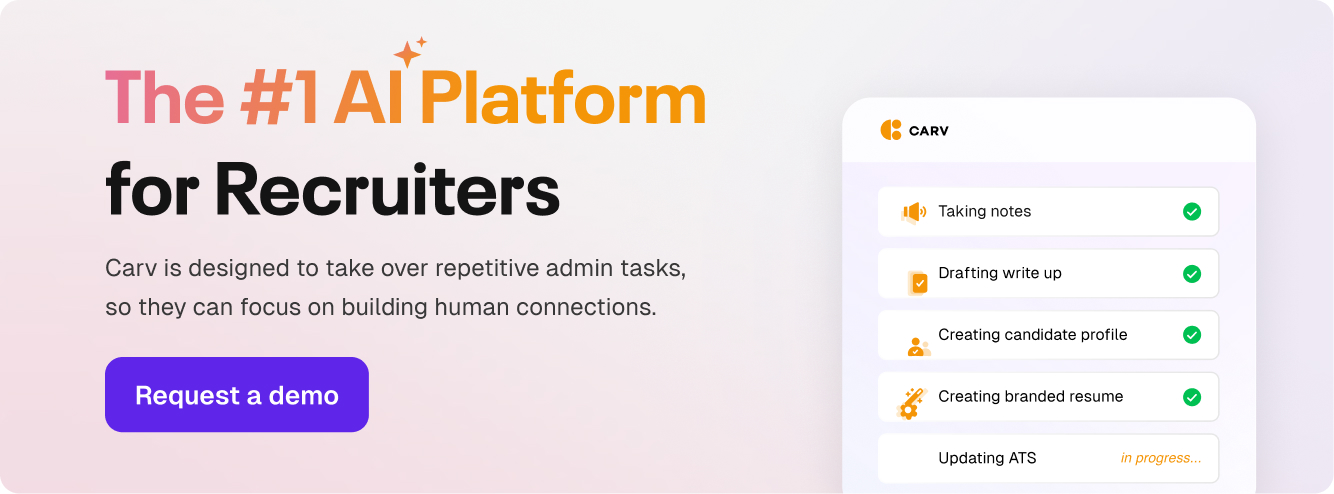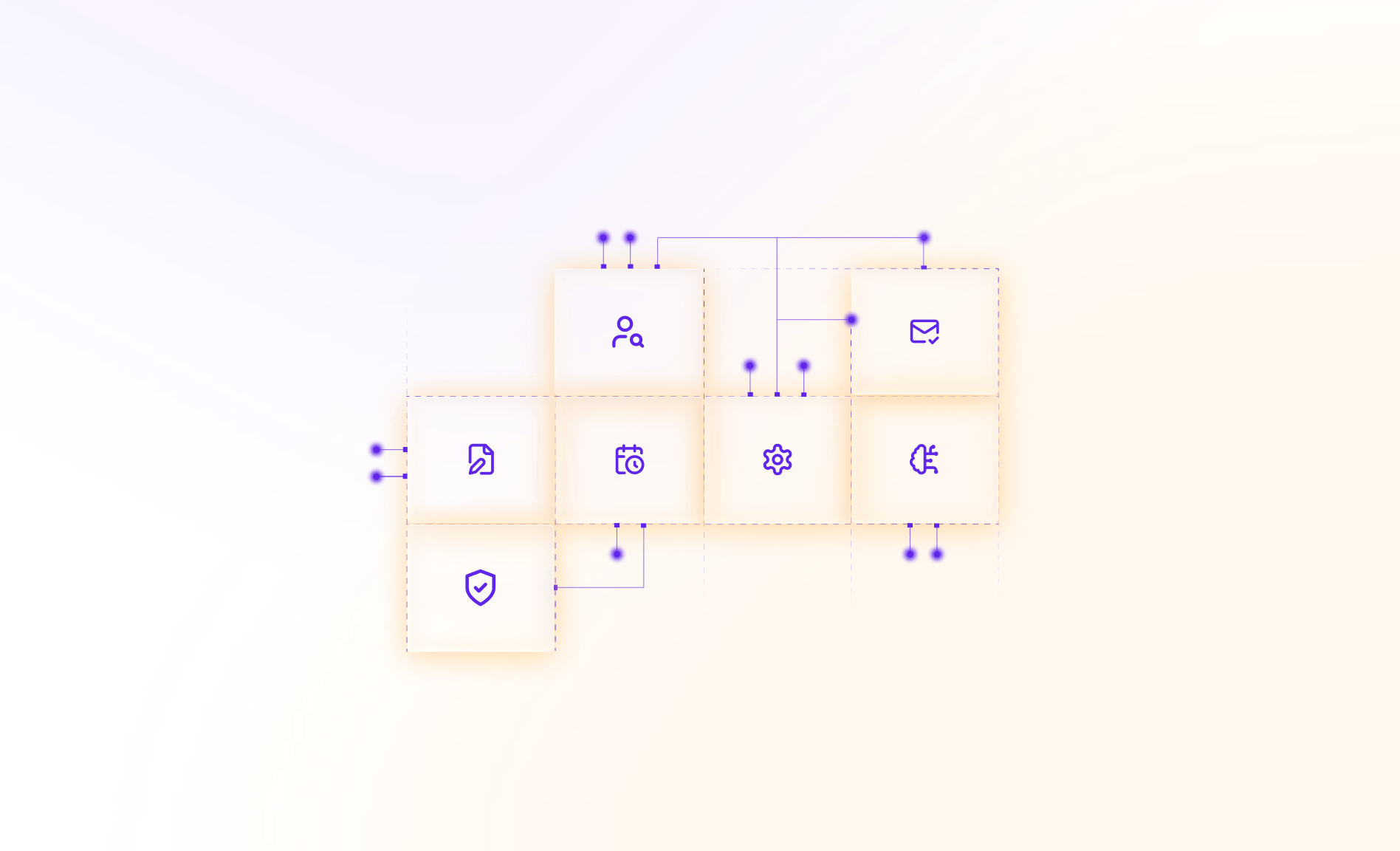2023 saw generative AI tiptoe into the recruitment world. The innovators and early adopters embraced this new technology and experimented with its use cases, paving the way for 2024's AI explosion.
This year, we expect artificial intelligence to leap headfirst into the talent acquisition landscape, unleashing a wave of change. As a result, the commoditization of AI technology becomes reality and the adoption of AI recruiting tools will accelerate.
As a recruiter navigating this new reality, the question is no longer if things will change or if AI is here to stay, but how prepared you are for the ride. So buckle up, because this year is poised to be a game-changer.
Here's what 2024 holds for recruitment.
The accelerated adoption of AI
Forget the wait-and-see approach of 2023. This year, expect an AI adoption surge as both trailblazing TA teams and hesitant newcomers jump onboard.
The groundwork laid last year is now proving to be the catalyst for a more widespread and inclusive adoption of AI tools in recruiting, with both the early and late majority of talent acquisition professionals embracing this transformative technology and becoming comfortable with the use of AI in their hiring practices.
As of 2023, AI recruitment is utilized by 35% to 45% of companies. If this rate of growth continues, it's probable that the majority of companies will have embraced AI-driven recruitment automation by 2025.
This widespread adoption is quickly "commoditizing" AI, making it more accessible and cost-effective. The result is a leveling of the playing field, where even smaller recruiting teams can leverage advanced technology to compete on a more equal footing with their larger counterparts.
As trust and knowledge grow, the adoption pace is skyrocketing, leaving behind any doubts about AI's staying power in recruitment.
The formation of an adoption gap
However, the adoption of AI is not uniform across the recruitment industry - and we expect he asynchronous adoption pattern to continue this year. Some TA teams, hindered by doubts, insecurity, or inertia, are lagging behind.
Notably, differences are visible between small and mid-market companies, on the one hand, and larger enterprises or government organizations, on the other hand. The former are potentially better positioned for experimenting with AI-driven recruitment strategies, while the latter might face constraints due to size, internal policies, and regulatory oversight.
This creates an "adoption gap," causing a chasm in productivity, knowledge, and quality between AI-enabled recruiters and traditional TA teams.
Those already using artificial intelligence to power their hiring mention the speed of the process and the ability to save time as the main advantages, followed by its applications in sourcing, and ability to create a personalized candidate experience.
AI-driven market shifts
The potential asynchronous adoption of AI recruiting technology is poised to cause significant market shifts, especially among recruiting service providers.
Clients are likely to gravitate towards companies that have integrated AI into their practices, seeking improved services and a steady stream of qualified candidates at a competitive cost.
This dynamic could create opportunities or pitfalls, depending on where a company stands in relation to the adoption gap. Companies implementing AI in their hiring process will gain a competitive advantage, reaching both top talent and potential clients faster.
A wild west of AI development
Open-source AI and commercially available APIs make building AI-powered tools and agents accessible to anyone, and recruitment tools aren’t an exception.
This democratization fuels innovation, encouraging both vendors and recruiters to think beyond chatbots and ChatGPT clones and reimagine the hiring process from the ground up.
Thus, in 2024, we anticipate a continuous surge in the emergence of AI-based hiring tools, transforming the landscape of talent acquisition. As technology advances, these tools are expected to become even more sophisticated, offering innovative solutions to streamline and enhance the hiring process.
Still, this completely green field comes with risks too, so it’s fair to look at widely available AI as both a blessing and a curse. It's a blessing because it opens the door to a completely different approach to human resources and recruitment technologies.
However, it can be a curse because independent developers do not always have the means to abide by regulations. In the talent acquisition world, where you’re handling sensitive data, this can be a problem. Companies will have to find the right balance between embracing AI-driven innovations and ensuring compliance to mitigate unconscious bias and potential security and privacy-related risks.
The rise of the AI-enabled recruiter
As we experiment, the useless fades away, leaving behind valuable AI applications. We learn to work alongside AI, aligning its strengths with our goals.
This year, we expect a shift towards tools that empower recruiters, not replace them, and help streamline processes and improve decision-making. Imagine AI recruiting software handling time-consuming tasks like job posting, resume screening, assessments, or scheduling interviews.
But it doesn’t stop there because gen AI can work with unstructured data too. We can, therefore, expect AI algorithms to take over tasks like writing job descriptions, engaging with job seekers through talent pools, debriefing intake calls with hiring managers, and writing motivation letters to support hiring decisions.
This shift towards admin-free recruitment gives TA teams their time back, freeing them to focus on strategic tasks and to build meaningful relationships with both candidates and stakeholders.
Recruiter - AI synergy
"Autonomous hiring" might bring to mind images of robots conducting interviews, but in 2024, the reality is more nuanced. The year is defined by synergy, where AI augments human recruiters rather than replacing them.
This synergy unfolds at different levels. Firstly, there's a shift towards systems with new user interfaces, where AI collaborates with humans in real time, offering goal-based outputs rather than just replying to prompts.
Additionally, there's a move towards contextual enrichment of AI tools in hiring. Organizations adopting such tools establish centralized data repositories, enabling both humans and AI to draw contextually relevant data from the same source of truth for a shared understanding of a company’s hiring space.
And third, we're seeing a move towards artificial intelligence that seamlessly integrates into workflows rather than waiting on the sidelines. AI takes over pre-designated tasks, becoming a silent partner and engaging humans only in exceptional circumstances when their input is essential.
As AI interacts with humans and processes data, it continually learns and evolves. This shared learning creates a feedback loop where both AI and recruiters improve their abilities: Recruiters gain deeper insights into AI's capabilities, while AI learns to better understand human nuances and decision-making.
.avif)
The first steps towards autonomous hiring
As AI technology matures, the industry is progressively adopting the idea of admin-free recruitment, transforming AI from a mere tool into a strategic partner. This shift lays the foundation for a transformative change in how we discover, hire, and retain talent: the era of autonomous hiring.
Illustrating this shift are AI recruiters. These advanced hiring systems employ specialized AI agents that autonomously operate in the background, streamlining various processes.
They take the lead in recruitment initiatives, such as posting job openings, identifying suitable candidates, running video interviews, or shortlisting the best talent for specific clients. This empowerment allows recruiters to concentrate on building robust employer brands, fostering connections with candidates and customers, and devising impactful strategies.
In AI-led hiring, human recruiters and their AI counterparts collaborate asynchronously across different facets of the recruitment process, achieving a seamless synergy.
This movement towards autonomous recruitment encompasses not only efficiency, speed, and potential bias reduction but also a redefinition of roles for talent acquisition professionals. However, until we’re ready to fully embrace AI-led recruitment, we have to address a series of ethical and practical complexities.

The bottom line
2024 is AI's breakout year in recruitment. Embrace the changes, understand the risks, and seize the opportunities.
By navigating the AI adoption gap and fostering a productive human-AI partnership, you can thrive in this exciting new era.
Remember, the future of recruitment isn't just about AI, it's about humans harnessing its power to create a better, more efficient, and ultimately, more human hiring experience.



%20(1).avif)



%20(1).avif)
.avif)